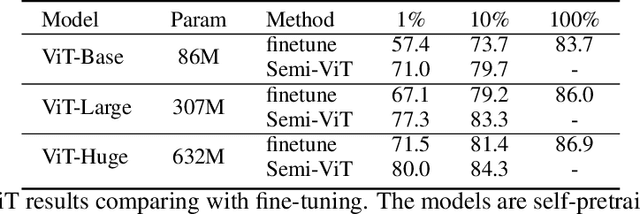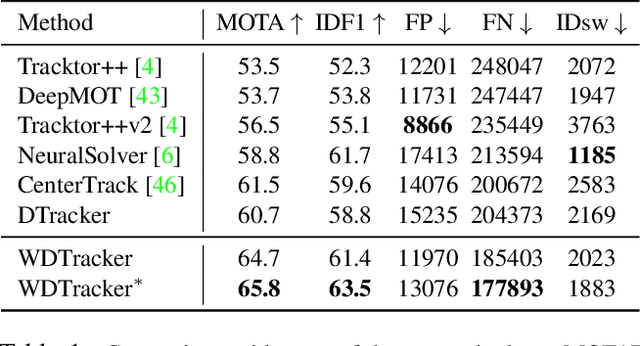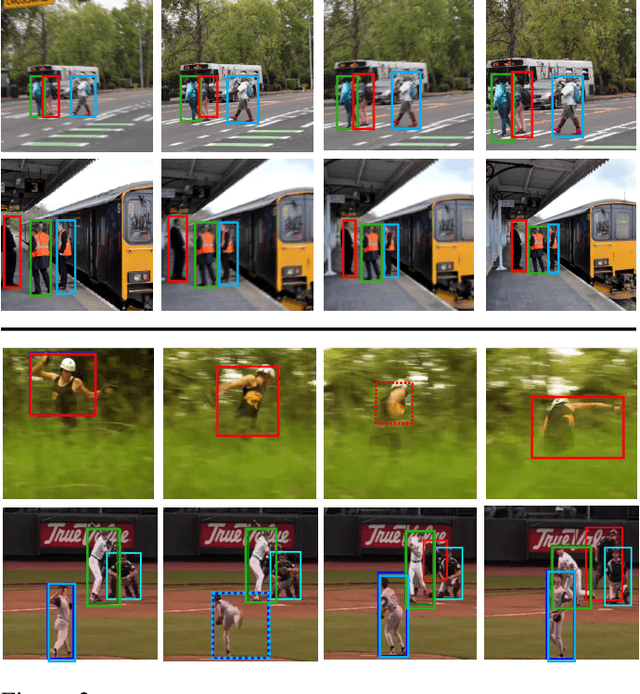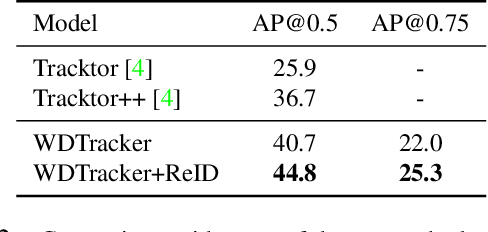Manchen Wang
SemiGPC: Distribution-Aware Label Refinement for Imbalanced Semi-Supervised Learning Using Gaussian Processes
Nov 03, 2023Abstract:In this paper we introduce SemiGPC, a distribution-aware label refinement strategy based on Gaussian Processes where the predictions of the model are derived from the labels posterior distribution. Differently from other buffer-based semi-supervised methods such as CoMatch and SimMatch, our SemiGPC includes a normalization term that addresses imbalances in the global data distribution while maintaining local sensitivity. This explicit control allows SemiGPC to be more robust to confirmation bias especially under class imbalance. We show that SemiGPC improves performance when paired with different Semi-Supervised methods such as FixMatch, ReMixMatch, SimMatch and FreeMatch and different pre-training strategies including MSN and Dino. We also show that SemiGPC achieves state of the art results under different degrees of class imbalance on standard CIFAR10-LT/CIFAR100-LT especially in the low data-regime. Using SemiGPC also results in about 2% avg.accuracy increase compared to a new competitive baseline on the more challenging benchmarks SemiAves, SemiCUB, SemiFungi and Semi-iNat.
Denoising and Selecting Pseudo-Heatmaps for Semi-Supervised Human Pose Estimation
Sep 29, 2023Abstract:We propose a new semi-supervised learning design for human pose estimation that revisits the popular dual-student framework and enhances it two ways. First, we introduce a denoising scheme to generate reliable pseudo-heatmaps as targets for learning from unlabeled data. This uses multi-view augmentations and a threshold-and-refine procedure to produce a pool of pseudo-heatmaps. Second, we select the learning targets from these pseudo-heatmaps guided by the estimated cross-student uncertainty. We evaluate our proposed method on multiple evaluation setups on the COCO benchmark. Our results show that our model outperforms previous state-of-the-art semi-supervised pose estimators, especially in extreme low-data regime. For example with only 0.5K labeled images our method is capable of surpassing the best competitor by 7.22 mAP (+25% absolute improvement). We also demonstrate that our model can learn effectively from unlabeled data in the wild to further boost its generalization and performance.
Challenges of Zero-Shot Recognition with Vision-Language Models: Granularity and Correctness
Jun 28, 2023



Abstract:This paper investigates the challenges of applying vision-language models (VLMs) to zero-shot visual recognition tasks in an open-world setting, with a focus on contrastive vision-language models such as CLIP. We first examine the performance of VLMs on concepts of different granularity levels. We propose a way to fairly evaluate the performance discrepancy under two experimental setups and find that VLMs are better at recognizing fine-grained concepts. Furthermore, we find that the similarity scores from VLMs do not strictly reflect the correctness of the textual inputs given visual input. We propose an evaluation protocol to test our hypothesis that the scores can be biased towards more informative descriptions, and the nature of the similarity score between embedding makes it challenging for VLMs to recognize the correctness between similar but wrong descriptions. Our study highlights the challenges of using VLMs in open-world settings and suggests directions for future research to improve their zero-shot capabilities.
ScaleDet: A Scalable Multi-Dataset Object Detector
Jun 08, 2023



Abstract:Multi-dataset training provides a viable solution for exploiting heterogeneous large-scale datasets without extra annotation cost. In this work, we propose a scalable multi-dataset detector (ScaleDet) that can scale up its generalization across datasets when increasing the number of training datasets. Unlike existing multi-dataset learners that mostly rely on manual relabelling efforts or sophisticated optimizations to unify labels across datasets, we introduce a simple yet scalable formulation to derive a unified semantic label space for multi-dataset training. ScaleDet is trained by visual-textual alignment to learn the label assignment with label semantic similarities across datasets. Once trained, ScaleDet can generalize well on any given upstream and downstream datasets with seen and unseen classes. We conduct extensive experiments using LVIS, COCO, Objects365, OpenImages as upstream datasets, and 13 datasets from Object Detection in the Wild (ODinW) as downstream datasets. Our results show that ScaleDet achieves compelling strong model performance with an mAP of 50.7 on LVIS, 58.8 on COCO, 46.8 on Objects365, 76.2 on OpenImages, and 71.8 on ODinW, surpassing state-of-the-art detectors with the same backbone.
Semi-supervised Vision Transformers at Scale
Aug 11, 2022



Abstract:We study semi-supervised learning (SSL) for vision transformers (ViT), an under-explored topic despite the wide adoption of the ViT architectures to different tasks. To tackle this problem, we propose a new SSL pipeline, consisting of first un/self-supervised pre-training, followed by supervised fine-tuning, and finally semi-supervised fine-tuning. At the semi-supervised fine-tuning stage, we adopt an exponential moving average (EMA)-Teacher framework instead of the popular FixMatch, since the former is more stable and delivers higher accuracy for semi-supervised vision transformers. In addition, we propose a probabilistic pseudo mixup mechanism to interpolate unlabeled samples and their pseudo labels for improved regularization, which is important for training ViTs with weak inductive bias. Our proposed method, dubbed Semi-ViT, achieves comparable or better performance than the CNN counterparts in the semi-supervised classification setting. Semi-ViT also enjoys the scalability benefits of ViTs that can be readily scaled up to large-size models with increasing accuracies. For example, Semi-ViT-Huge achieves an impressive 80% top-1 accuracy on ImageNet using only 1% labels, which is comparable with Inception-v4 using 100% ImageNet labels.
Multi-Object Tracking with Hallucinated and Unlabeled Videos
Aug 19, 2021



Abstract:In this paper, we explore learning end-to-end deep neural trackers without tracking annotations. This is important as large-scale training data is essential for training deep neural trackers while tracking annotations are expensive to acquire. In place of tracking annotations, we first hallucinate videos from images with bounding box annotations using zoom-in/out motion transformations to obtain free tracking labels. We add video simulation augmentations to create a diverse tracking dataset, albeit with simple motion. Next, to tackle harder tracking cases, we mine hard examples across an unlabeled pool of real videos with a tracker trained on our hallucinated video data. For hard example mining, we propose an optimization-based connecting process to first identify and then rectify hard examples from the pool of unlabeled videos. Finally, we train our tracker jointly on hallucinated data and mined hard video examples. Our weakly supervised tracker achieves state-of-the-art performance on the MOT17 and TAO-person datasets. On MOT17, we further demonstrate that the combination of our self-generated data and the existing manually-annotated data leads to additional improvements.
Combining detection and tracking for human pose estimation in videos
Mar 30, 2020



Abstract:We propose a novel top-down approach that tackles the problem of multi-person human pose estimation and tracking in videos. In contrast to existing top-down approaches, our method is not limited by the performance of its person detector and can predict the poses of person instances not localized. It achieves this capability by propagating known person locations forward and backward in time and searching for poses in those regions. Our approach consists of three components: (i) a Clip Tracking Network that performs body joint detection and tracking simultaneously on small video clips; (ii) a Video Tracking Pipeline that merges the fixed-length tracklets produced by the Clip Tracking Network to arbitrary length tracks; and (iii) a Spatial-Temporal Merging procedure that refines the joint locations based on spatial and temporal smoothing terms. Thanks to the precision of our Clip Tracking Network and our merging procedure, our approach produces very accurate joint predictions and can fix common mistakes on hard scenarios like heavily entangled people. Our approach achieves state-of-the-art results on both joint detection and tracking, on both the PoseTrack 2017 and 2018 datasets, and against all top-down and bottom-down approaches.
 Add to Chrome
Add to Chrome Add to Firefox
Add to Firefox Add to Edge
Add to Edge